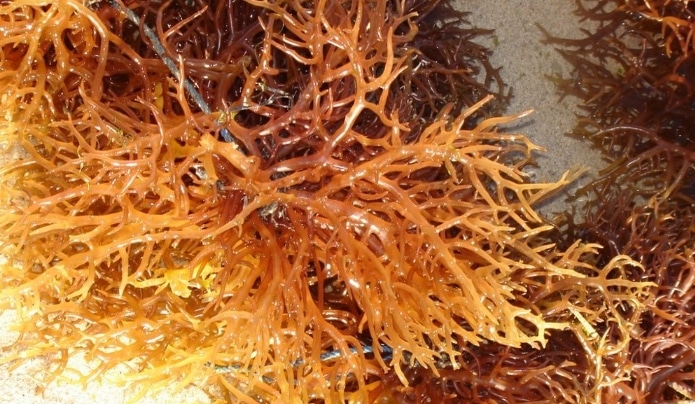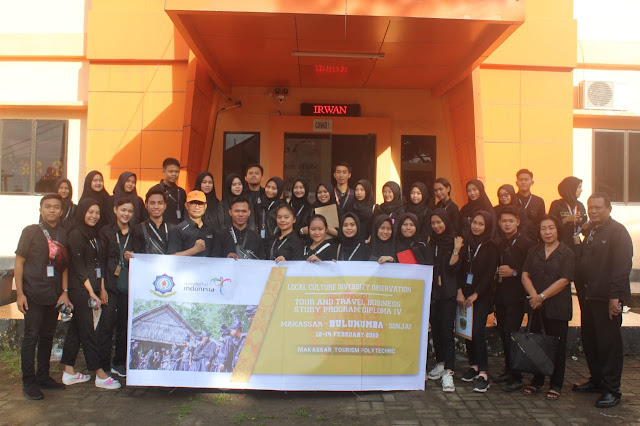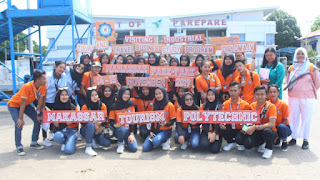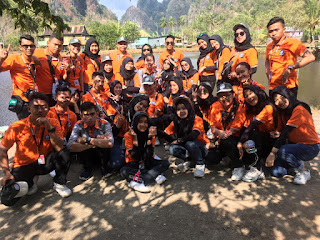CULTURE TOUR ( BULUKUMBA REGENCY - SINJAI REGENCY )
Assalamualaikum. Minasan, ogenki desuka...
Thanks for visiting my blog.So the trip this time is to Bulukumba regency - Sinjai regency. Participants of the tour who participated were 33 Travel Business Classes (UPW 2C), tour leaders (mister Reza UPW6 & miss Nita UPW4), accompanying lecturers (sir Amir, sir Halim, & ma'am Ruth), vendors from Geda Nusa travel (sir Badar & mister Rasul) and drivers sir Sammy & sir …... .I thank them for accompanying our trip for 3 days, 12-14 February 2020.
 |
| Our TOUR LEADER (Reza & Nita) |
 The first place we observed was Jeneponto regency, precisely in the process of making salt. We interviewed one of the salt sellers there, according to him that the salt would not be made during the rainy season, the water used to process salt is mixed water (salt water & fresh water), what he sells is coarse salt and fine salt, fine salt is taken from the most marginal pile of salt, and coarse salt taken from the middle pile. There are about two people who process the salt. salt can prevent mumps. The money they get from the sale of salt in a day is 50,000 rupiah. If the weather is good, their salt will be dried in the sun for around 5-7 days. Large boxes for drying salt are 40 in diameter and 80 in diameter. They sell salt weighing 2 kg at a price of 10,000 rupiah, 1 kg 50,000 rupiah. There is also a fast method of producing salt, which is by using absorbent plastic such as plastic detergents that can be purchased in Surabaya, with this method salt will be produced in just three days.
The first place we observed was Jeneponto regency, precisely in the process of making salt. We interviewed one of the salt sellers there, according to him that the salt would not be made during the rainy season, the water used to process salt is mixed water (salt water & fresh water), what he sells is coarse salt and fine salt, fine salt is taken from the most marginal pile of salt, and coarse salt taken from the middle pile. There are about two people who process the salt. salt can prevent mumps. The money they get from the sale of salt in a day is 50,000 rupiah. If the weather is good, their salt will be dried in the sun for around 5-7 days. Large boxes for drying salt are 40 in diameter and 80 in diameter. They sell salt weighing 2 kg at a price of 10,000 rupiah, 1 kg 50,000 rupiah. There is also a fast method of producing salt, which is by using absorbent plastic such as plastic detergents that can be purchased in Surabaya, with this method salt will be produced in just three days.
The second place is the Tana Toa traditional area, precisely in Bulukumba Regency.
When we got there we were welcomed by Mr. Mail as an employee of the Bulukumba tourism office. When we entered the area, we were asked to take off our shoes. This is done not without reason, to open footwear signifies because the people there assume that the land is mother, from the land we are created and from the land we return, so there is no intermediary between mother and child, like that. we walked about 1 kilometer to be able to meet Amma toa (the highest leader in the village). when walking, the road we passed was rocky and muddy because it was already raining. Right in front of Amma Toa's house, before we entered, we washed our feet and then entered her house, her house is a wooden house. We talked with Amma toa, and got a lot of knowledge about the village of tana toa from her. Like, the language he uses is the Konjo language. In their village there are two laws, namely customary law and State law. The customary law is called "Install". There are 8 hamlets, and there are approximately 400 people who are required to vote. He said in his village all men must have a job, if he did not work he would be suspected of bad things by their neighbors. There is also a requirement for women to get married, that is, they must be good at sewing by hand, good at cooking, and making coffee. The majority of people work as farmers. They grow cloves, pepper, cocoa, corn, bananas and coconuts. Every day amma toa and her community hold a meeting. The events that have been held are the bride and groom, the A'dingingi event (cooling 3 atmosphere, human, earth and plants), the A'bosi event (asking for rain), A'borong (meeting held when there is a problem or making new regulations ). Ammatoa and the people in the house used a head covering (Passapu), a black shirt and a sarong. He said if he visited his place, he had to guard his words, because according to him not only was the body wearing a sarong, but also the mouth. The summons to call the parents there are petta and puang. They only recognize three colors, namely black (Bolong), red (Eja), and white (pute). Their kitchen is in front, because if there is a guest, the guest knows what he eats and knows that the host's food is the same as what he eats. Their house faces west because they believe it brings blessings.
The accommodations where we stayed were SAME RESORT in Bulukumba and Grand Rofina HOTEL in Sinjai. At the SAME resort, we observe the facilities, room types, and other facilities as our duty later.The restaurants where we have lunch and dinner are SULAWESI restaurants in Bantaeng district, NIKMAT restaurants in Sinjai Regency, ANDA BEACH HOTEL & RESTO in Bulukumba, WAROENG KAMPUNG TOA in Bantaeng. The food is very good and tasty.
 |
| SAME RESORT IN BULUKUMBA REGENCY |
 |
| WAROENG KAMPOENG TOA IN BANTAENG REGENCY |
The third place is the place for making Phinisi boats, in Tana Beru, Bulukumba Regency. The types of wood used are iron wood and teak wood. The ship is usually ordered by those from Malaysia, Buton and others. The ship is ready for use in 2 years. the ship is finished working there are 5-6 months and even 1 year. There are as many as 30 people who pull this ship to the ocean when it's finished. And there is a ritual at the beginning of its manufacture. One ship is employed by approximately 10 people. The size of the ship is 13 meters in area, and 50 meters in length. They work starting at 8 am and resting at 11 noon. Every part of the ship has a special worker. The number of rooms on the ship depends on the buyer request. The shipbuilding began in 2011 and is operational in 2015.
The next place is the Karampuang traditional house area. When we headed for the whitewater (king) house, we walked and the road resembled a rocky hill. And there is a sign that is done if you want to enter there, which is looking for a small stone around the place, and the small stone is covered with leaves and then placed on a large stone. Arriving at the whitewater home, we met and talked with Manjene's 90-year-old grandmother. According to him the house already existed before he was born. In the village the majority of the population is Muslim. There is a custom event called Mang Ade '. This is done if there is a new rice harvest, guests who come are village people who come directly without needing to be invited. The event is usually held in November. People who come will bring food. The stairs of his house are in the middle of the house, not in front of the house, there is also a philosophy that is, their home is like a human being, humans are born through the stomach (middle) and the ladder is the entrance and exit of the host for activities. In every house there, there is a triangle-shaped roof called Rakkeang. The Rakkeang consists of 2 and 3 levels. Arung's house is a house that has 3 levels of Rakkeang, which means that Arung's house is the highest degree house (the king's house). Inside his house there is a pole which is the center of the house called the Pocci Bola. The type of wood they use is Bitti wood, this wood is not eaten by termites. They really maintain this wood. The livelihoods of the people are farming and gardening. There are many papaya there. Call for parents who are there called Toma Toa. If it is Eid, at Arung's house they do an event called Baca-Baca, Manre-manre and collect money to donate it at the mosque. The shape of the house is still original. There were 500 people who visited to observe at the whitewater house.
The next place is Batu Pake Archaeological Park, Gojeng. There are 125 stairs. We went up the stairs, and at the top we saw many stones that had been carved, and there were graves of kings and queens. The stone above has a hole of 15-70 cm in depth. the word "use" means a chisel, so BATU PAKE means a carved stone. The word Gojeng is the name of the place where the stone is located. From above, we can see the view of Sinjai city. It is said that the top of the stone using gojeng is land, and underneath is water. The water in the stone is believed to make youthful. The king was buried along with his favorite items like a kris because they believed that there was a next life and he could use the item again. Around the graves of kings and queens are the tombs of the ladies-in-waiting. The stone has existed for a long time, then carved by previous people and shaped rectangular.
Then we stopped at the place of seaweed cultivation in Bantaeng regency. Nylon rope is used to tie seaweed seeds, this is done by mothers. This type of seaweed is Eucheuma cottonnii. This seaweed is usually made dodol, cosmetics, aircraft paint, textiles and chips. The stretch of seedlings taken to sea, the spacing is 60-80 cm. the distance from the seashore to the sea is 100m and a depth of 20m. They produce 50 kilos of grass per stretch. If they do dry in the river mouth, if the rainy season is done at sea. Seaweed sales are still selling in local consumers, not yet exports. The biggest seaweed company in Indonesia is PT. Agar Indo (Java).
 |
| https://www.faunadanflora.com/cara-budidaya-rumput-laut-eucheuma-cottonii-bagi-pemula/ |
visited one of the buildings that has the history of the Bantaeng kingdom, Balla Lompoa riLantebung. The building is located on Bolu Street, Lantebung Village, Letta Village, Bantaeng District. Called Lantebung (Ilalang) because in the village, many wild grasses were overgrown. Balla Lompoa Ri Lantebung was the residence of a king at the time of the kingdom in Butta Toa, namely Karaeng Pawiloi who led the kingdom of Bantaeng, in 1913 - 1945. The building was shaped like a wooden house on stilts. It has three windows in front of it, which are left open. While the stairs are located on the right side of the building. The roof is painted red, and at the top of the ridge there is a carved dragon as a sign of social status. In Pucak the front roof of the ridge is the head of the Dragon while behind it is the tail. Balla Lompoa itself in Makassar language, means a large house or a house of greatness, which functions as a private residence or house of the king's office in his day and government administration. But over time, Balla Lompoa ri Lantebung has been consumed by age. And since 2005, reconstruction has been carried out by a number of children of Karaeng Pawiloi descent.
 |
| http://sulsel24k.blogspot.com/2015/07/balla-lompoa-di-kabupaten-bantaeng.html |

that's our trip. hopefully can increase your knowledge about the cultural richness in South Sulawesi.
for more exciting and unique information, don't hesitate to contact me on Instagram @putrimaisyura, and to see more clearly the atmosphere of this blog please visit my vlog LIZA MAISYURA.
Arigatoo gozaimasu !


















wah keren banget blognya semangat terusnya,,,dek
BalasHapus